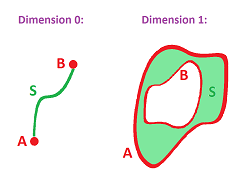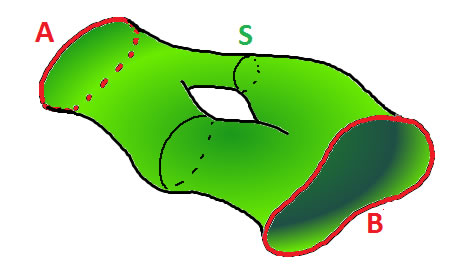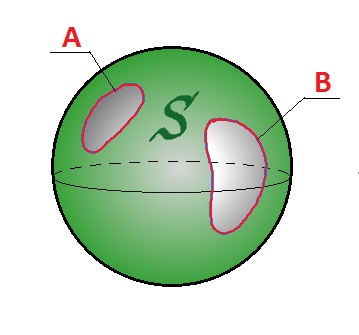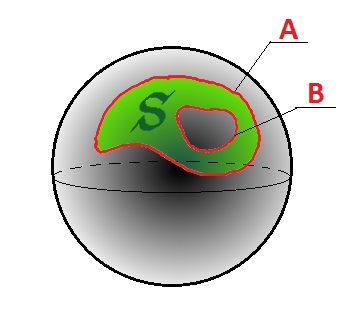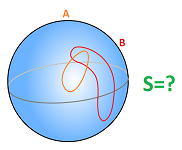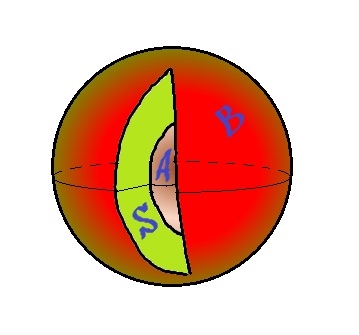This site is being phased out.
Bordism
Two closed $p$-manifolds $N_{0},N_{1}$ are called bordant if there is a bordism between them, i.e., a $(p+1)$-manifold $W$ such that $\partial W=N_{0}\sqcup-N_{1}.$ Two closed singular manifolds, i.e., simply maps, $s_{i}:N_{i}\rightarrow M,$ $i=0,1,$ are bordant, $s_{0}\sim_{b}s_{1},$ if there is a map $h:W\rightarrow M$ extending $s_{0}\sqcup s_{1},$ where $W$ is a bordism between $N_{0}$ and $N_{1}.$
Bordism of dimension $p=0$ and $p=1$ on the plane:
- dimension $0$: points $A \sim B$ if there is a curve between them.
- dimension $1$: curves $A \sim B$ if there is a surface between them.
A more general setting for dimension $p=1$ bordism:
Specifically on the sphere:
The last image explains why we need to deal with singular manifolds.
As an example of dimension $2$ bordism, consider the inner and outer surfaces of the "thick" sphere:
Bordism is an equivalence relation.
One can develop a homology theory based on this very natural construction. However, it's much harder to compute than the singular homology.
